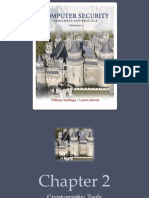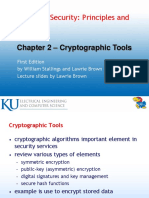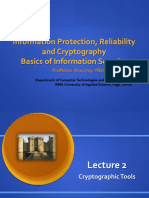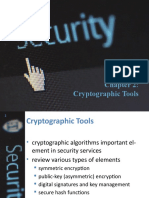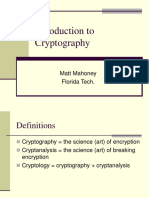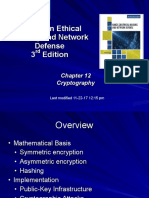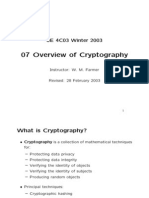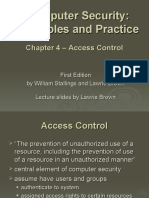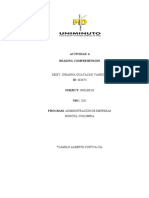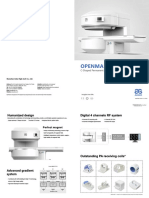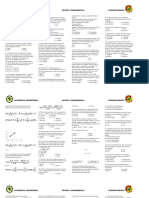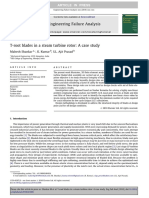0% found this document useful (0 votes)
113 views25 pagesCryptographic Tools Overview
This chapter discusses cryptographic tools including symmetric encryption algorithms like DES and AES for encrypting data, hash functions like SHA for message authentication, public key encryption for confidentiality and digital signatures, and the importance of random numbers. It covers attacking methods like cryptanalysis and brute force attacks. An example is given of encrypting stored data for confidentiality.
Uploaded by
krishnakumar velapanCopyright
© © All Rights Reserved
We take content rights seriously. If you suspect this is your content, claim it here.
Available Formats
Download as PPT, PDF, TXT or read online on Scribd
0% found this document useful (0 votes)
113 views25 pagesCryptographic Tools Overview
This chapter discusses cryptographic tools including symmetric encryption algorithms like DES and AES for encrypting data, hash functions like SHA for message authentication, public key encryption for confidentiality and digital signatures, and the importance of random numbers. It covers attacking methods like cryptanalysis and brute force attacks. An example is given of encrypting stored data for confidentiality.
Uploaded by
krishnakumar velapanCopyright
© © All Rights Reserved
We take content rights seriously. If you suspect this is your content, claim it here.
Available Formats
Download as PPT, PDF, TXT or read online on Scribd
/ 25

